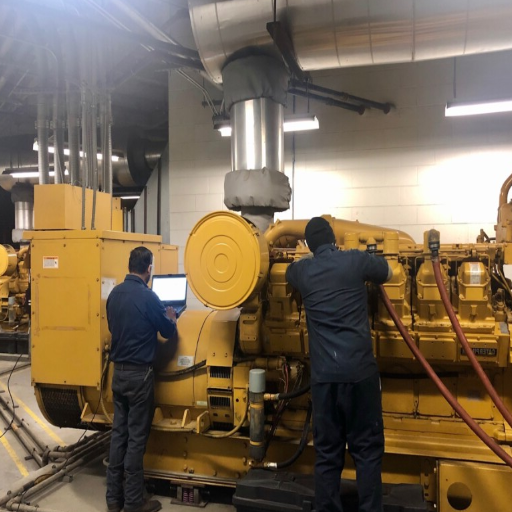Generators are critical assets in providing reliable backup power during emergencies or in off-grid scenarios. Ensuring their optimal performance requires a systematic approach to regular maintenance and inspection. This article outlines an authoritative and comprehensive maintenance checklist designed to help you prolong the lifespan of your generator, reduce downtime, and avoid costly repairs. From routine inspections to key component assessments, we will cover all the essential steps necessary for maintaining a fully operational and reliable power system. Whether you’re a seasoned technician or a first-time generator owner, this guide will provide you with the framework needed to keep your generator running smoothly and effectively.
Why is regular generator maintenance important?
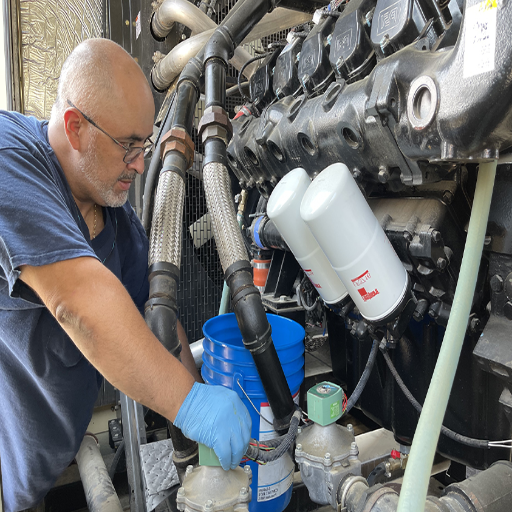
Ensuring reliable power during outages
Regular maintenance of a generator is crucial in guaranteeing functionality. Functions such as power reserves during outages are secured by avoiding system mishaps and providing optimal efficiency. Each generator is made of an extraordinarily diverse set of components such as the battery, fuel system, alternator, and engine which all need to be well maintained and inspected regularly. During emergencies, failing to do so can result in severe malfunctions.
- Battery Voltage: Ensure that battery voltage meets standard requirements (Ex 12V for smaller generators, 24V for industrial models) to have sufficient power for the engine to start.
- Fuel Quality: Ensure that any fuel with contamination is removed and replaced when necessary. This should be completed every 6 to 12 months for diesel.
- Oil Pressure: Do not let oil pressure exceed 20-60 PSI to facilitate the health of the engine.
- Frequency and Voltage Output: To avoid damaging any associated equipment, guarantee a stable frequency of 60 Hz in the US and voltage as indicated on the generator rating.
Meeting these factors via regular maintenance can increase the life of the generator, reduce operational downtime, and guarantee reliable power output during power outages.
Prolonging the life of your generator
- Load Tests: To guarantee that the generator is run within acceptable conditions for it to perform the load test, I conduct load tests at 50-70% of the generator’s rated capacity. Achieving these goals will help avoid loss of efficiency over time.
- Voltage and Frequency Control: The output of the generator is also controlled in a way that the frequency is held constant at 60Hz while the voltage is at the level which is specified in the rating. This helps to prevent damage to the equipment and overcomes the efficient loss.
- Oil Change and Filter Service: As per the recommendations from the manufacturer, I periodically change engine oil and oil filters. Maintaining the right amount of lubricating oil will sustain its appropriate viscosity while clean filters will ensure no contamination will have a chance to pass into the system.
- Coolant Level and System Check: I monitor the level of the coolant and ensure there are no leaks or blockages that would affect the engine temperature by keeping it at the operating limits and preventing overheating.
- Battery Maintenance: Checking the battery state of charge and battery connections to the terminals ensures that the unit will start reliably during these critical times.
These procedures are designed to address specific parts of the generator that would have the biggest impact on reliable performance with the lowest possible maintenance cost.
Reducing maintenance costs in the long run
I focus on preventive maintenance inspections and ensure that routine service work is performed as instructed by manufacturers, which minimizes operational costs in the long run. Regular oil and filter change is an example because it minimizes overhauling of the engine and maximizes their lubrication adding which defers overhauling.
Moreover, I constantly check the fuel quality to prevent issues like injector fouling or carbon residues accumulating, which can be expensive to resolve. Furthermore, maintaining coolant levels as per the guidelines and ensuring the coolant-to-water ratio (e.g., 50/50) is appropriate facilitates good heat transport. This prevents overheating which could result in expensive replacements of parts.
About electrical parts, I always account for reasonable use of the load (ideally 70-80% of the full capacity of the generator to avoid under/overloading it). I supervise the amount used so that one does not go beyond the reasonable estimate, as this will enhance the usability of both the mechanical and electrical components. Ensuring good performance of the battery is yet another important factor, and I pay attention to terminal and charge levels, as poor attention leads to battery performance failures which are costly.
How often should I service my standby generator?

Monthly maintenance tips
Regular monthly maintenance is important to maintain the efficiency and functionality of your standby generator. Here are some recommendations along with the critical pointers to track:
- Fluid Levels Monitoring: It is necessary to track engine oil, coolant, and fuel levels on a timely basis. If oil is used, make sure the measure is situated between “Low” and “Full” on the engine oil dipstick gauge as per the instructions manual of the generator’s manufacturer.
- Battery Test: Make sure the battery voltage lies within range. It is usually 12.4 – 12.7 volts for a 12V system. The terminals should be free from corrosion and dirt buildup to ensure uninterrupted connection.
- No Load Test: Run the generator for 15-30 minutes without any load to check for any abnormal noises and wear-out signs in the engine. Measure the frequency and idle speed (generally 1800 or 3600 RPM depending on generator design).
- Fuel System Test: Check ducts, hoses, clamps, and seals for leakage, blockages, or blanks. This checks that there are no issues with fuel delivery during utilization.
- Replace or Clean the Air Filter: Inspect the air filter for any dirt and debris and replace it every 100-200 operational hours to avoid restricted airflow which affects engine performance.
- Check Electrical Connections: Tighten all wiring and connections to prevent power delivery problems. Ensure the voltage output (normally 120V or 240V depending on your system) complies with your generator’s rating.
If these systematic monthly maintenance steps are followed alongside the measures against the technical specifications provided, the chances of sudden standby generator malfunctions are vastly decreased and so are the troubles associated with servicing them. Always remember to follow the servicing interval instructions provided by the manufacturer of the generator.
Quarterly service recommendations
To maintain the generator, it will require a detailed examination of its parts. Start by conducting a deep clean of the unit as this will get rid of any dust, debris and contaminants that can negatively affect critical parts of the generator. Check the air filter for excessive wear and replace it if needed. A clean air filter allows for optimal airflow to the generator, increasing its efficiency.
Examine the fuel system and fuel lines for any cracks, blocks, or leaks. Also, make sure the connections are properly secured. Check that fuel of good quality is being used so that it does not go stale. Coolant levels need to be checked along with the radiator for signs of corrosion or leaks. Make sure that the temperature of the generator is between 180 degrees Fahrenheit and 220 degrees Fahrenheit as this is the ideal operating range for the generator.
To check if the battery still has a charge and is working fine, a multimeter can be used to measure its voltage. For standard systems, while the battery is idle, it should maintain a level of 12.4V to 12.7V and when in operation, a slightly higher level. The battery will need to be replaced if it is unable to hold a charge or shows signs of wear.
Make sure that all electrical connections are intact and not corroded. Conduct a load simulated testing to confirm operational functionality within the demand conditions. This test hopefully will demonstrate that the generator can provide its rated output power, 120 V or 240 V, without overloading or power fluctuation. Following these quarterly recommendations strengthens generator dependability and reduces system failure risks during critical use cases.
Annual generator maintenance schedule
Annual maintenance of a generator consists of a breakdown of services and inspections throughout the year to ensure that the generator is reliable and efficient. Some of the key procedures to focus on include the following:
- Oil and Filter Replacement: Change the mining oil and oil filters according to the manufacturer guidelines after every 100-250 operational hours, or once a year, whichever comes first. Use oil that is appropriate and meets the viscosity and API classification required by the generator model.
- Coolant System Service: Flush and change the coolant once every year, to avoid overheating, or prevent corrosion in the cooling system. Confirm the coolant type and mixture ratio specified by the manufacturer, for example, a 50/50 mix of antifreeze and water.
- Fuel System Inspection and Cleaning: Verify fuel lines to assess for wear and clogging, as well as clean fuel tanks to alleviate sediment buildup. Change out fuel filters and check if the quality of the fuel meets the standards, such as minimum cetane number diesel or octane rating for gasoline.
- Battery Integrity Check: Test voltage levels of the battery ( for a charged lead acid battery the level is 12.6V and 24V for industrial generators). Clean terminals and confirm proper electrolyte levels are met within the specifications.
- Air Filter Cleaning or Replacement: Check annually then replace air filters to maintain the optimum air-to-fuel mixture ratios, as poor airflow cuts down the performance of the generator.
- Verification of Electrical Components: Ensure electrical connections are free of corrosion and secure all connections. Check wires and terminals for resistance using an ohmmeter, and confirm the results are within acceptable limits.
- Testing with Load Bank: Perform a full load bank test to replicate operational activities. Ensure the generator functions within its power capacity (e.g. 120V/240V, 50 or 60Hz). While the test is ongoing, continue checking voltage stability, fuel consumption, frequency variation (normal is ±3%), and more.
Following this annual schedule and conducting these technical maintenance measures with the validated parameters increases the chances of efficient operation of the generator while minimizing the risk of failure.
What are common generator problems and how to prevent them?
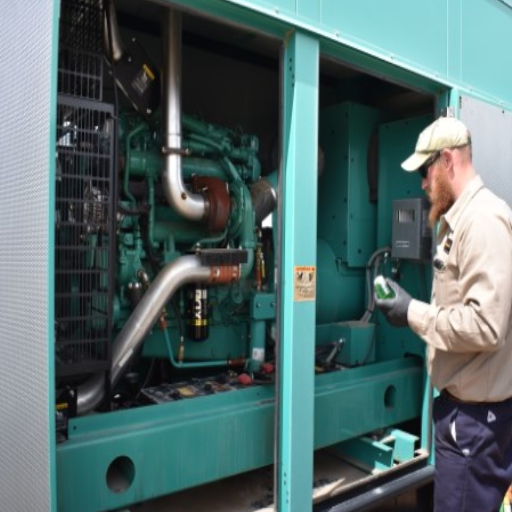
Addressing fuel and oil leaks
Dealing with oil and fuel leakage calls for a keen inspection with set maintenance practices. To curb fuel leakage, I make it a point to check all the fittings, connections, and fuel lines for loose ends or signs of corrosion. If any of those components are damaged or worn out, I shall replace them immediately. Fuel lines must not have any cracks, as they need to be sealed and undamaged to maximize the integrity of the system.
Now and then, I check the common sources of leakage which are oil seals, gaskets, and drain plugs. I check if the gaskets are free of wear and properly placed as well as the drain plugs to check if they have been tightened to the right torque order. Drain plugs for oil tend to differ in the models used, but they are usually from 18 to 22 foot-pounds. Additionally, to minimize relying on the motor oil at the bottom of the oil dipstick, the cap should be set between “Min Max.” Ensuring that there is no excessive pressure building up on the system is also key to preventing disaster. To cover the periods of 6-12 months, I swap the filters or oil based on the hour of my usage.
Through these inspections and maintenance within the manufacturer’s set technical, I catch active leaks as well as reduce the probability of future leaks. In addition, maintenance intervals and findings are documented chronologically, allowing controlled fuel and oil integrity.
Maintaining proper coolant levels
Failure to maintain the required coolant levels will result in insufficient engine performance and overheating. The coolant reservoir tank should be filled to the level indicating between “Min” and “Max.” Inspections are to be carried out every 6000 miles or 6 months, whichever is first, about the automobile’s activity. The mixture coolant contains 50% antifreeze and 50% distilled water since this ratio gives most engines the best protection against freezing and boiling. Always verify that the coolant used meets the manufacturer’s specifications, such as with OAT or HOAT. Using them wrongly will result in corrosion or scaling of the cooling system.
- Coolant Temperature: The coolant temperature has to be 180°F – 220°F (82°C – 104°C) during regular operations.
- pH levels: The pH of the coolant should not drop below 8.5 and should not exceed 10.0 to avert acidic corrosion.
- System Pressure: The cooling system pressure has to meet the requirements of the radiator cap. For most automobiles, the range stands between 13 to 16 psi.
Following the above factors and keeping records of maintenance cycles guarantees functional efficacy as well as saves on costly repairs on the cooling system.
Troubleshooting electrical issues
While concentrating on fixing an electrical problem, I use a sequential method that assesses important features and components of a system. To begin with, I perform a battery voltage test that should fall between 12.6V and 12.8V when fully charged. Further, the output voltage from the alternator should always be between 13.5V and 14.5V when the system is running, otherwise, the system is not being properly charged. If these values are outside, a battery or charging system may be at fault.
I will next check every electrical connection for corrosion, wear, and looseness because they may bring about high resistance leading to intermittent faults. Employing a multimeter, I check continuity and resistance across vital circuits. Resistance does not reflect a level above that which is usually specified by the manufacturer; for most vital wiring, this is less than 0.5 ohms.
In the end, I will also pour my efforts into parasitic current draw detection. Assuming the engine is switched off, I expect the draw to not extend above 50mA normally. Everything above may indicate some parts like a relay or control module do not switch off properly.
Lastly, I analyze fuse and component voltages to differentiate the affected system as well as the area failing. This approach helps restore prompt functionality and enhances system reliability at the same time.
When should I call a professional for generator repair?
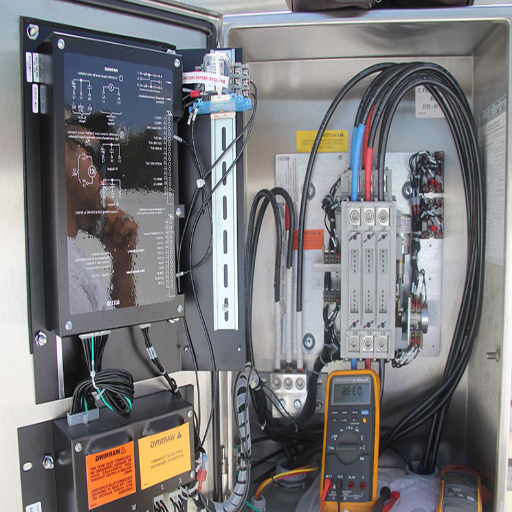
Signs that indicate professional service is needed
Always take immediate action and consult experts when you observe unusual problems with your generator. Here are some symptoms to watch out for:
- Too Much Fuel Fluctuations: If the energy output is not stable (most of the time it deviates from 120V for standard sockets or 240V for higher lines), it is indicative of more complex problems with the alternator or voltage regulator.
- Irregular Noises or Movements: Excessive rattling or unordinary knocking while the engine is working could suggest vibration changes as well as internal mechanical damage, loose components, or faulty bearings.
- Higher Than Average Fuel or Oil Consumption: If the generator is consuming fuel and oil that far exceeds the manufacturer’s specs, it’s indicative of possible leaks, inefficient combustion, or damaged engine components.
- Overheating: Excessive overheating as demonstrated by gauges going over the temperature range (that is usually between 190 to 220 degrees Fahrenheit for liquid cores engines) may indicate failure of the cooling system or blockage of airflow.
- Problems Starting: Frequent starting problems due to weak spark timings, problematic starter motors, or most commonly, persistently low battery voltage require examination by professionals.
- Faulty Generator Alerts: Many modern generators are equipped with diagnostic systems capable of generating error codes due to problems related to low coolant levels, elevated oil pressure, or even discrepancies in battery charging levels. Heed these alerts.
For tackling these issues, professional repair services are advisable, as they address proper diagnostic procedures and increase the generator’s uptime while adding to its age.
Benefits of hiring a certified technician
Engaging the services of a certified technician guarantees that all issues relating to a generator’s performance are thoroughly checked and resolved with accuracy. Certified technicians bring expertise in advanced problem diagnosis through the use of appropriate tools and practices. For example:
- Correct Analyses: Certified technicians utilize the diagnostic systems and tools specific to the manufacturer to scrutinize error codes that stem from low coolant levels or battery charging issues to accurately identify the root cause of the issue.
- Compliance with Specifications: Certified professionals ensure adherence to coolant temperature with liquid-cooled engines set between 190 and 220 degrees Fahrenheit as well as other industry-recommended standards.
- Improved Reliability: They rectify weak spark timing, airflow blockages, and starter motor deficiencies which improves your generator’s operational reliability and lifespan.
The effective troubleshooting of certified technicians resolves most problems with minimum downtime while ensuring adherence to technical standards necessary for the proper functioning of the generator. Because of their know-how, the machine must work with utmost safety, thereby freeing you from having to deal with costly repairs in the long run.
How can I extend the lifespan of my generator?
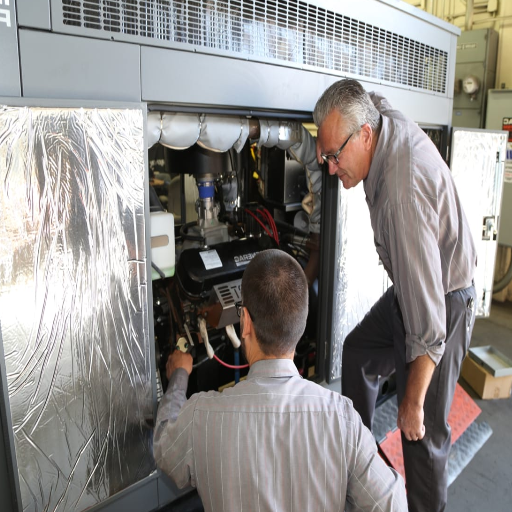
Best practices for generator storage
In maintaining proper generator function, proper storage is crucial.
- Before storage, clean and inspect the generator: The first step is to clean the generator from any remaining debris, dust, or residues. Secondly, ensure there are no detectable signs of wear, leaks, or damage. If any sign is visibly detected, ensure you fix them before storing the unit.
- Drain or stabilize fuel: If your generator uses gasoline, make sure to drain the fuel completely to avoid contamination. Alternatively, if there is still fuel in the tank, then ensure that the tank is sealed securely to prevent contamination. Remember that any stale gasoline will be able to clog the carburetor or injectors.
- Change oils and filters: When performing general maintenance on the generator, try to replace the engine oil with a new filter. If you do not change it, the old oil will cause unnecessary wear on the internal components of the engine.
- Battery Maintenance: If you do not intend to use the generator for a long time, make sure to unplug the battery. To avoid capacity loss, strive to store the battery in a cool place, while simultaneously using a trickle charger for prevention of sulfation.
- Choose an Appropriate Storage Location: The generator should be kept in a ventilated and dry spot that’s free from dust and other harsh elements. Furthermore, the location where the generator will be stored should not have any temperature extremes, this moisture condensation can cause rust and electrical failure.
- Cover with Protective Material: When storing a generator, moisture condensation should be avoided, thus breathable generator covers should be used. In addition, the cover should not be airtight as this increases the chances of internal condensing.
- Run Periodic Tests: To keep all the components mobilized and lubricated, the generator has to be in operation for 15-20 minutes every month. This will also make it easier to identify any problems and fix them promptly.
Following these suggestions will help maintain the functionality and serviceability of your generator.
Proper use and load management
If insufficient load control is exercised on a generator, it can have severe effects on the safety, efficiency, and longevity of the generator. Following are some pointers worth considering:
- Calculate the Load: Every generator is intended to serve a certain wattage load both in running and starting modes. The total power in the appliances exceeds the wattage provided by the generator, which results in overheating the engine components. For example, if a generator has a maximum output of 5000 watts, running and starting appliances should not exceed this number to avoid blowing the fuse.
- Apply Load Slowly: When tasks are divided and devices are connected, one should consider adding the load being applied deliberately. Begin with essential or high-priority appliances that require steady power. This approach prevents power surges that can be detrimental to the generator.
- Voltage and Frequency Monitoring: High or low voltage levels and frequency deviations can harm both the generator and connected appliances. Typically, a generator operates at a steady frequency of 60 Hz and provides a standard voltage of 120V or 240V. Use a voltage meter or integrated monitoring system if available to ensure stable output.
- Keeping a Balanced Load: Prevent overworking internal components by distributing the load evenly. Maintaining a balance can improve efficiency, and even the wear and tear on the circuit pathed is reduced.
- Refrain from Operating at a Low Load for Prolonged Periods: Running a generator with minimal loads can result in carbon build-up in the engine which is commonly referred to as a wet stacking. To avoid this, generators should be during operation.
- Cooling Periods: To prevent overheating, ensure that the ventilation around the unit is proper while it is in operation. During heavy loads, allow the unit to cool down after prolonged usage.
By following these load management practices, the generator’s durability and performance can be maximized.
Reference sources
Frequently Asked Questions (FAQs)
Q: What should be included in a generator inspection checklist?
A: A comprehensive generator inspection checklist should include checking the fuel system, oil levels, coolant levels, battery condition, air filters, belts and hoses, exhaust system, and transfer switch. It’s also important to test the generator under load, inspect for any leaks, and ensure all electrical connections are secure. Regular inspections help identify potential issues before they become major problems, ensuring your generator is ready when you need it most.
Q: How often should I perform generator maintenance?
A: It’s best to follow a regular maintenance schedule for your generator. For most standby generators, this includes monthly self-inspections, quarterly maintenance checks, and a comprehensive annual inspection by a professional generator technician. However, the frequency may vary depending on the generator type, usage, and manufacturer recommendations. Diesel generators may require more frequent maintenance than natural gas or propane units.
Q: What are the benefits of following a generator maintenance checklist?
A: Following a generator maintenance checklist helps ensure your generator remains in optimal condition. Benefits include improved reliability during power outages, extended equipment lifespan, reduced risk of unexpected breakdowns, lower repair costs over time, and maintaining warranty coverage. A well-maintained generator set is more likely to start and run efficiently when you need it most, providing peace of mind for your power generation needs.
Q: How can I keep my generator running smoothly between professional maintenance visits?
A: To keep your generator running smoothly between professional service visits, you’ll want to perform certain maintenance tasks regularly. These include running the generator monthly for about 30 minutes, checking and changing the oil as needed, inspecting belts and hoses for wear, cleaning the air intake, and keeping the surrounding area clear of debris. It’s also important to maintain proper fuel levels and test the automatic transfer switch periodically.
Q: What signs indicate that my generator needs immediate maintenance?
A: Signs that your generator needs immediate maintenance include unusual noises during operation, excessive vibration, visible leaks, difficulty starting or frequent shutdowns, reduced power output, or warning lights on the control panel. If you notice the generator shutting off unexpectedly or producing excessive smoke from the exhaust system, it’s crucial to have it inspected by a professional as soon as possible to prevent major problems.
Q: How do I know when it’s time to request a quote for professional generator service?
A: It’s a good idea to request a quote for professional generator service annually or if you notice any performance issues. Additionally, if your generator has reached a certain number of running hours (typically around 200-400 hours for standby units), it may be time for a more comprehensive service. Always consult your owner’s manual for specific recommendations, and don’t hesitate to contact a generator service team if you’re unsure about your generator’s needs.
Q: What should be included in an annual generator maintenance service?
A: An annual generator maintenance service should be comprehensive and typically includes: • Changing oil and filters • Inspecting and cleaning the air intake system • Checking and adjusting belt tension • Testing and servicing the battery • Inspecting the entire fuel system • Checking and cleaning the spark plugs • Verifying proper operation of the transfer switch • Load bank testing • Inspecting all electrical connections • Lubricating necessary components • Checking the entire exhaust system • Reviewing and updating maintenance records This thorough inspection ensures your emergency generator remains reliable and ready for use.
Q: How does preventive maintenance help extend the life of my generator?
A: Preventive maintenance helps extend the life of your generator by addressing potential issues before they become serious problems. Regular servicing keeps all components in good working order, reduces wear and tear, and ensures optimal performance. This proactive approach can significantly reduce the likelihood of unexpected breakdowns, minimize repair costs, and maximize the overall lifespan of your generator equipment. By following a consistent maintenance plan, you’re investing in the long-term reliability and efficiency of your power generator system.



